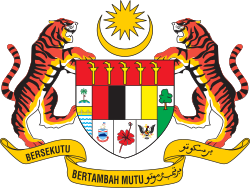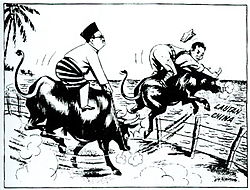This article has multiple issues. Please help improve it or discuss these issues on the talk page . (Learn how and when to remove these messages)
|
 | |
 Front page of Berita Harian from 5 March 2020. | |
| Type | Daily newspaper |
|---|---|
| Format | Compact |
| Publisher | The New Straits Times Press (M) Bhd |
| Founded | 1 July 1957 |
| Language | Malay |
| Headquarters | Balai Berita 31, Jalan Riong, 59100 Bangsar, Kuala Lumpur, Malaysia |
| Circulation | 106,754 (daily) 109,811 (BH Ahad) 3,766 (daily E-paper) 3,765 (BH Ahad E-paper) *Source: Audit Bureau of Circulations, Malaysia – July to December 2015 [1] [2] |
| Website | www |
| Part of a series on |
| Conservatism in Malaysia |
|---|
 |
Berita Harian (shortened to BH) is a Malay-language daily newspaper in Malaysia. It is published by the New Straits Times Press and was first issued on 1 July, 1957. Its Sunday edition, BH Ahad (formerly Berita Minggu), debuted on 10 July 1960. By 2004, Berita Harian had a daily circulation of approximately 238,000 copies.[ citation needed ]

